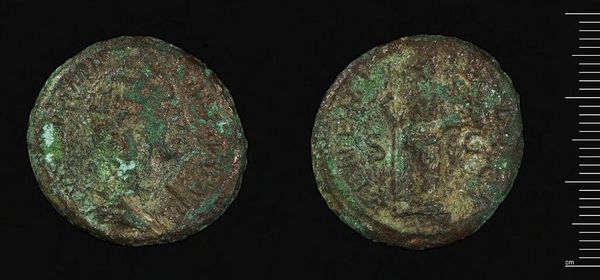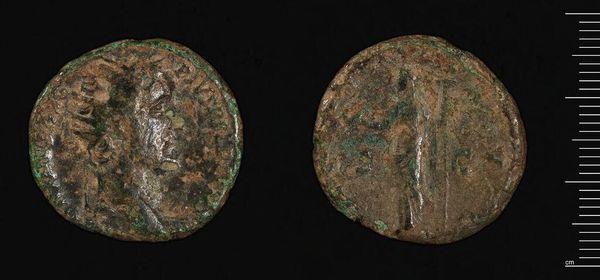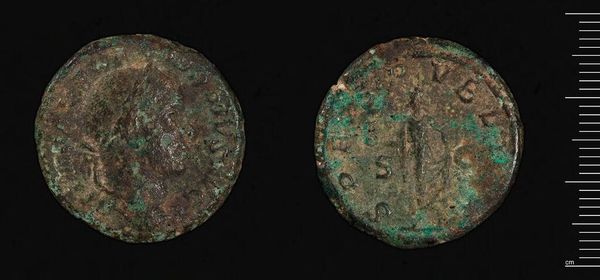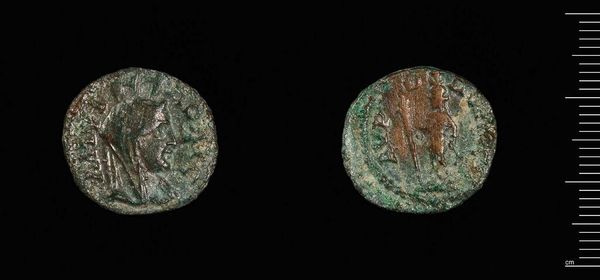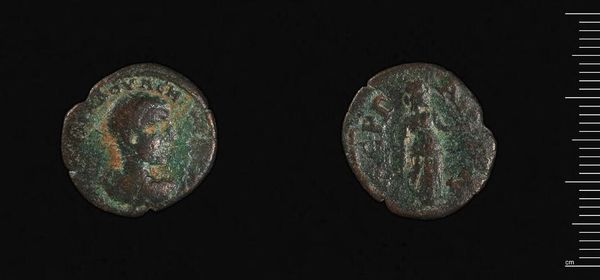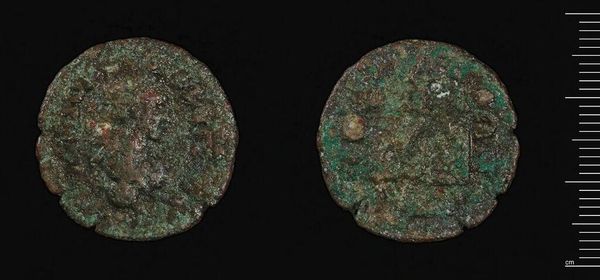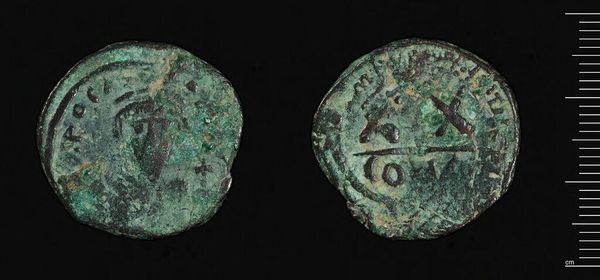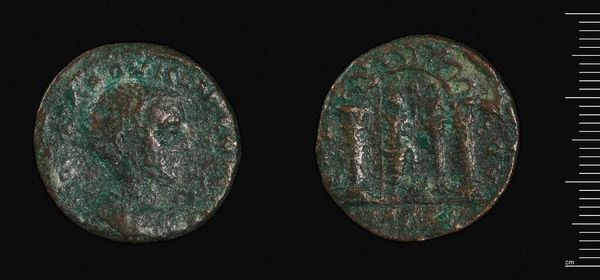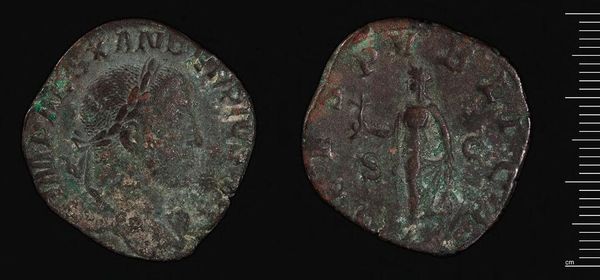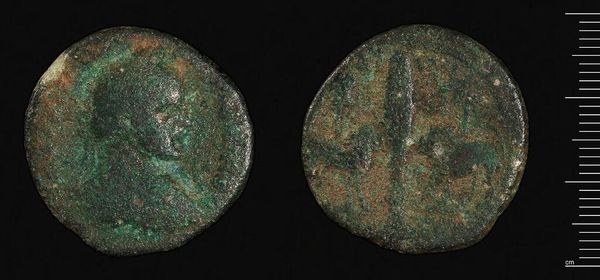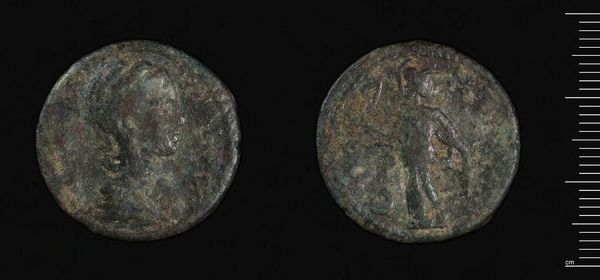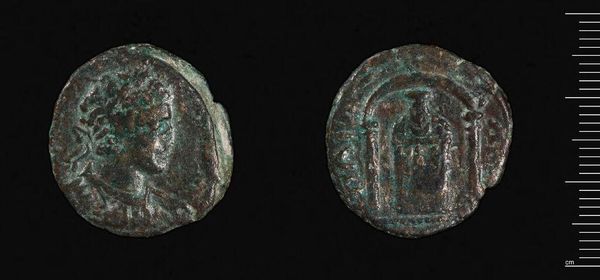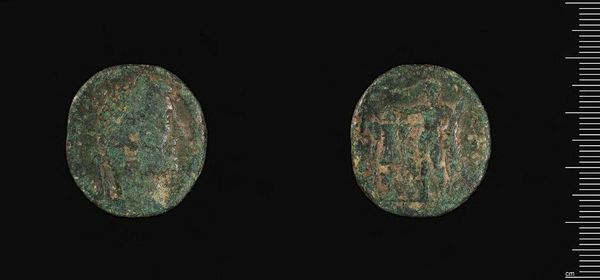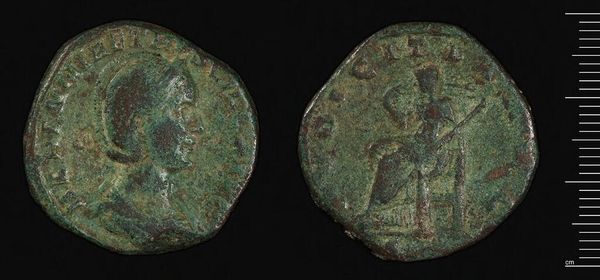
Dimensions: 9.56 g
Copyright: CC0 1.0
Curator: Here we have a Dupondius, a Roman coin weighing 9.56 grams, made under Emperor Commodus, now held at the Harvard Art Museums. It has a verdigris patina—quite lovely, really. Editor: It definitely shows its age. I'm immediately struck by the degradation—the wear tells a silent story of its journey through history. Curator: Indeed, the coin's material composition—likely bronze or orichalcum—speaks to Roman metallurgy and its role in economic systems. Its creation underscores the labor involved in minting currency. Editor: And the very existence of coinage represents state power. Commodus placing his image on currency served to solidify his public image, and to influence the flow of commerce during his reign. Curator: The process of crafting such coins en masse reflects a deep investment in stabilizing trade, enabling the exchange of goods and resources—which is a testimony to the period's societal needs. Editor: Looking at this now, I realize that something as mundane as money was also a powerful political tool. Curator: It’s remarkable how a small object can reveal the intersection of politics, economics, and daily life in ancient Rome. Editor: I agree. A fascinating piece, prompting us to think about the enduring power of imagery and materials across millennia.
Comments
No comments
Be the first to comment and join the conversation on the ultimate creative platform.
